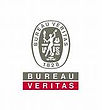

Asbestos identification before work France
Sébastien MARCHAL
Technical manager of Lille Nord real estate diagnostics and appraisals
CASADIAG
EXPERTISE

Asbestos identification before work France

CASADIAG
EXPERTISE
Sébastien MARCHAL
Technical manager of Lille Nord real estate diagnostics and appraisals
Diagnosis Termites Hauts-de-France

In France, 54 departments are infested by termites. 25 departments are fully affected by termites and 29 departments are partially affected by termites. In Hauts-de-France, only the city of Calais is concerned by a prefectural decree. To date, there is no prefectural decree for Lille and the North, so no Lille Nord termite diagnosis is compulsory. On the other hand, given their speed of propagation, they will arrive one day or another.
These xylophagous insects cause serious damage until the foundations of a house are destabilized.
So if you live in one of the departments concerned by a prefectural decree delimiting the areas infested by termites, you must be producing a parasitic state of your property as soon as the compromise is signed, having less than six months, which allows you in as the seller to exempt you from one of the guarantees against hidden defects. This diagnosis completes the Technical Diagnosis File.
Types of termites in mainland France
In France and in Europe we have two types of termites:
- Dry wood termites (Kalotermes Flavicollis)
Drywood termites do not require moisture to survive and reproduce, making them more resilient during times of drought.
- Subterranean termites (Reticulitermes Sp and Reticulitermes Banyulensis).
Unlike drywood termites, subterranean termites need moisture to survive, which is why we mostly find them in temperate and Mediterranean areas.
Subterranean termites genus RETICULITERMES
Subterranean termites locate their presence mainly in the Mediterranean arc of mild and temperate temperatures.The species of termites of the genus Reticulitermes mainly encountered in metropolitan France are: - Réticulitermes santonensis or flavipes (south west of France - Nantes, Paris)
- Reticulitermes grassei (South west France)
- Reticulitermes lucifugus (south east France - Italy)
- Reticulitermes lucifugus corsicus (Corsica).
- Reticulitermes banyulensis (south east France - Spain)
- Réticulitermes urbis (Rhône Valley)
In addition to this, you need to know more about it.
Worker termites feed mainly on cellulose present in wood using their mandibles, they cut and tear wood. On the other hand, they can also feed on the cellulose present in paper, cardboard and composite wood products. They dig galleries and can build masonry tunnels called cordonnets.
In addition to this, you need to know more about it.
Their nests are obviously underground, and are generally located at a variable average distance between 10 and 30 meters from where they appear and sometimes they exceed 40 and 50 meters in some cases.
This aspect is essential to understand the functioning of a colony of subterranean termites: they travel a long distance in search of the wood which constitutes their food. Thus their underground colonization capacity is very high.
The social behavior of termites regulates the life of termites, their relationships, their castes, the way they reproduce and live together.
Subterranean termites cannot stand light, they suffer from what we call negative phototropism.
Phototropism is the ability of an organism (eg: plants, butterfly, plankton) to orient itself in relation to light. This tropism occurs either in the direction of light (positive phototropism or positive phototropic organism), or in the opposite direction (negative phototropism or negative phototropic organism). In the case of subterranean termites, this phototropism is negative, reacting negatively to the presence of light stimuli.
They access the wood of houses (window frames, plinths, plinths, parquet, door frames, wooden foundations, etc.) always underground, through partitions and walls if necessary.
Sometimes they have no choice but to continue their path outdoors in their search for new wood items to feed on. To protect themselves from the light, they build with saliva and excrete false tunnels or exterior chimneys which allow them to circulate inside without being affected by natural light.
Dry wood termites genus KALOTERMES
The common name of drywood termites inherited from its Anglo-Saxon name ("Drywood Termite") can be confusing. They don't really feed on dry wood, but rather on wood with a certain degree of moisture.
There are many differences between the two types of termites, but perhaps the most striking is the location of the termite mound. While subterranean termites set up their termite mounds several meters deep, drywood termites build their termite mounds on the wooden elements themselves that constitute their food. Due to its way of life, this species living mainly in standing trees or shrubs can be "transported" in plants during transplantation.
In addition to this, you need to know more about it.
Mobility is also one of its main differences, drywood termites have much less mobility than their subterranean peers. Dry wood termites will always move between wood elements, making their punctures inside, not being able to pass through building walls or partitions.
To create new colonies, drywood termites use breeding flights or swarms made by primary breeders who will become the future queens of the new colony.




